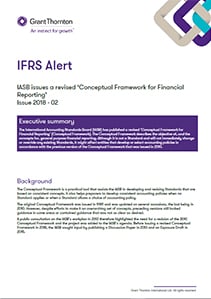-
Business Risk Services
Our Business Risk Services team deliver practical and pragmatic solutions that support clients in…
-
Corporate Finance and Deal Advisory
We offer a dedicated team of experienced individuals with a focus on successfully executing…
-
Economic Advisory
Our all-island Economics Advisory team combines expertise in economics and business with a…
-
Forensic Accounting
We have a different way of doing business by delivering real insight through a combination of technical…
-
People and Change Consulting
The Grant Thornton People & Change Consulting practice works with clients on these issues as well as on all…
-
Restructuring
We work with a wide variety of clients and stakeholders such as high street banks, private equity funds,…
-
Technology Consulting
Motivating and assisting our clients to pursue, maintain and secure the benefits of digital solutions is at the…
-
Corporate and International Tax
Northern Ireland businesses face further challenges as they operate in the only part of the UK that has a…
-
Employer Solutions
Our team specialises in remuneration and incentive planning and works closely with employers,…
-
Entrepreneur and Private Client Taxes
Our team of experienced advisors are on hand to guide you through any decision or transaction ranging…
-
Global Mobility Services
Grant Thornton Ireland offer a different approach to managing global mobility. We have brought…
-
Outsourced Payroll
Our outsourced service provides valued service to over 150 separate PAYE schemes. These ranging from…
-
Tax Disputes and Investigations
Our Tax Disputes and Investigation team is made up of tax experts and former HMRC investigators who…
-
VAT and Indirect Taxes
At Grant Thornton (NI) LLP, our team helps Northern Ireland businesses manage their UK and global…
The Conceptual Framework is a practical tool that assists the IASB in developing and revising Standards that are based on consistent concepts. It also helps preparers to develop consistent accounting policies when no Standard applies or when a Standard allows a choice of accounting policy.
The original Conceptual Framework was issued in 1989 and was updated on several occasions, the last being in 2010. However, despite efforts to make it an overarching set of concepts, preceding versions still lacked guidance in some areas or contained guidance that was not as clear as desired.
A public consultation on the IASB’s workplan in 2012 therefore highlighted the need for a revision of the 2010 Conceptual Framework and the project was added to the IASB’s agenda. Before issuing a revised Conceptual Framework in 2018, the IASB sought input by publishing a Discussion Paper in 2013 and an Exposure Draft in 2015.
Main issues addressed by the revised Conceptual Framework
The revised Conceptual Framework now provides a more complete, clearer and updated set of concepts.
It now contains guidance on measurement, financial performance, derecognition and the reporting entity—areas that previously contained no or only very little guidance. It also clarifies some existing guidance by for example reintroducing the concept of prudence or improving the concept of substance over form.
The revised Conceptual Framework also updates some existing concepts like the definitions of assets and liabilities. Although both definitions worked well in the past, the revised definitions now focus more on describing an asset as an economic resource and a liability as an obligation to transfer an economic resource rather than describing both in terms of a flow of benefits.
Alongside the revised Conceptual Framework the IASB has published ‘Amendments to References to the Conceptual Framework in IFRS Standards’. This publication updates nearly all of the references to previous versions with references to the 2018 Conceptual Framework.
However, some references have not been updated or allow preparers to continue applying the 2010 Conceptual Framework. To avoid unintended consequences, preparers are required to apply the definitions of assets and liabilities from the 2010 Conceptual Framework when accounting for business combinations under IFRS 3.
Also, preparers will continue using the 2010 definitions of assets and liabilities when accounting for regulatory account balances. This means preparers will not have to change their accounting for rate-regulated assets and liabilities twice within a short period of time as the IASB is planning to replace the interim Standard IFRS 14
‘Regulatory Deferral Accounts’ in the near future.
Effective date and transition
The Conceptual Framework is not a Standard and will not change or override any existing Standards. It is primarily a tool for the IASB to help them develop Standards based on consistent concepts. Over the last few years, the IASB has already started applying some of the new or revised concepts when developing or revising Standards.
However, entities that develop accounting policies using the Conceptual Framework, or that are in any other way affected by the amendments to IFRS Standards, will have to apply the changes from 1 January 2020.


